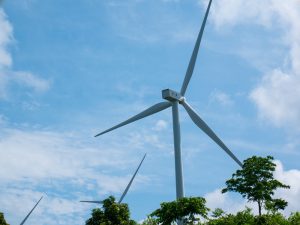Southeast Asia is widely considered the next global economic powerhouse; the region is home to over 655 million people, which is expected to reach a peak of 800 million by 2062. Australia and Southeast Asia are inextricably interlinked. Australian businesses’ future success and prosperity are heavily reliant on developing their relationship with the region.
The expansion of industrial activities, a growing population, and rising incomes are driving Southeast Asia’s rapid economic growth. The region’s energy demand is estimated to increase by 60 percent by 2040. It is also experiencing a period of economic structural transformation, and the challenge of diversifying its economy and transitioning from fossil fuels toward electrification will be a major challenge.
Southeast Asian governments are committed to a net zero future, with eight out of the 10 ASEAN member states committing to net zero targets by 2050. Australian businesses can play an essential role in assisting this energy transition, but must carefully consider where their competitive advantages lie. Australian companies should avoid exporting renewable energy to Southeast Asia and instead focus on accelerating critical mineral supply, deploying technology, and financing for project development, and supporting the development of infrastructure.
The recent news that SunCable, which had been spearheading the Australia-Asia PowerLink Project, had entered voluntary administration underscores the challenges of constructing a transnational green energy project. The project, which aimed to export renewable power from Australia to Singapore, was reportedly deemed no longer feasible by a key stakeholder, Squadron Energy. In the distant future, Australian renewable energy generators should avoid exporting green energy and instead focus on fulfilling domestic demand in Australia.
Southeast Asia is regarded as one of the world’s most renewable-rich regions. It has abundant renewable energy options, including world-leading geothermal and hydropower reserves, and boasts high-quality solar, wind, ocean, and bioenergy reserves.
Indonesia and the Philippines alone are home to a quarter of the globe’s geothermal generation capacity. Furthermore, renewable energy project development is materializing. Between 2019 and 2020, Vietnam installed 100,000 solar panels, increasing solar capacity in the country to more than 16 gigawatts, and demonstrating that the regional appetite for renewables is rising. With the rapidly declining cost of renewable energy in Southeast Asia, driven by economies of scale and complemented by low-land acquisition costs, more projects will become feasible in the short to medium term.
A focus on enhancing energy independence in response to geopolitical turbulence has prompted Southeast Asian leaders to accelerate the development of sovereign renewable energy projects. Ensuring secure, consistent, and affordable sources of energy has become a policy imperative and led to the development of a large number of renewable projects across the region.
Critical minerals are vital inputs for the energy transition; inadequate supply could result in a more expensive, belated, and less efficient transition in the region. Southeast Asia has the potential to become a major global supplier of bauxite, nickel, and rare earth elements.
However, Australia dominates the production of many critical minerals and has vast undeveloped reserves of critical minerals not found in Southeast Asia, including cobalt, lithium, rare earth, and vanadium. Australian reserves and/or production of these key minerals rank in the top five globally.
Furthermore, a growing focus on environmental, social, and corporate governance could potentially push Southeast Asian companies to source Australian-mined critical minerals. Australia is known globally for its robust environmental safeguards. Australian companies can also stabilize and ensure the resilience of the region’s renewable energy supply chain.
Moreover, Australia is a renewable energy pioneer, possessing the technical ability to resolve the bottlenecks that are likely to be experienced by Southeast Asian nations as they transition. There are opportunities for technology transfer and the creation of knowledge hubs across the region. Collaborative research and development will allow Australian technology to better access and adapt to the Southeast Asian market. The introduction of intermittent renewables into grids is considered a potential entry point for Australian firms, given the region’s challenges.
Australia is well on its way to integrating renewables into the domestic grid; a study by the Australian Energy Market Operator (AEMO) found that Australia’s electricity grid could safely derive up to 75 percent of its power from renewable energy sources as soon as 2025. Australia’s energy transition is more advanced than Southeast Asia, and there are opportunities to transfer expertise and experience to shorten the region’s learning curve. Australian businesses must move now, as they will face stiff competition from countries such as China, Japan, and South Korea.
Australia can also help by providing low-cost financing for renewable energy projects. Harnessing the region’s renewable potential will not come cheap. According to the International Renewable Energy Agency, an average annual investment of $210 billion is needed until 2050 to support Southeast Asia’s transition and limit a global temperature rise to 1.5 degrees Celsius. However, investment in the region’s green economy is worth it, with the economy estimated to provide up to a trillion-dollar opportunity per year by 2030. Timing for Australian investments is crucial as regional energy demand is scaling up. There are opportunities to benefit from the first mover’s advantage, and the Australian financial sector can establish itself as a market leader before other international players enter.
Given the region’s sizable market and need for infrastructure upgrades, large-scale private investments are required to realize Southeast Asia’s enormous renewable energy potential. The low-cost and high availability of land in many Southeast Asian countries means the return on investment could be high.

































